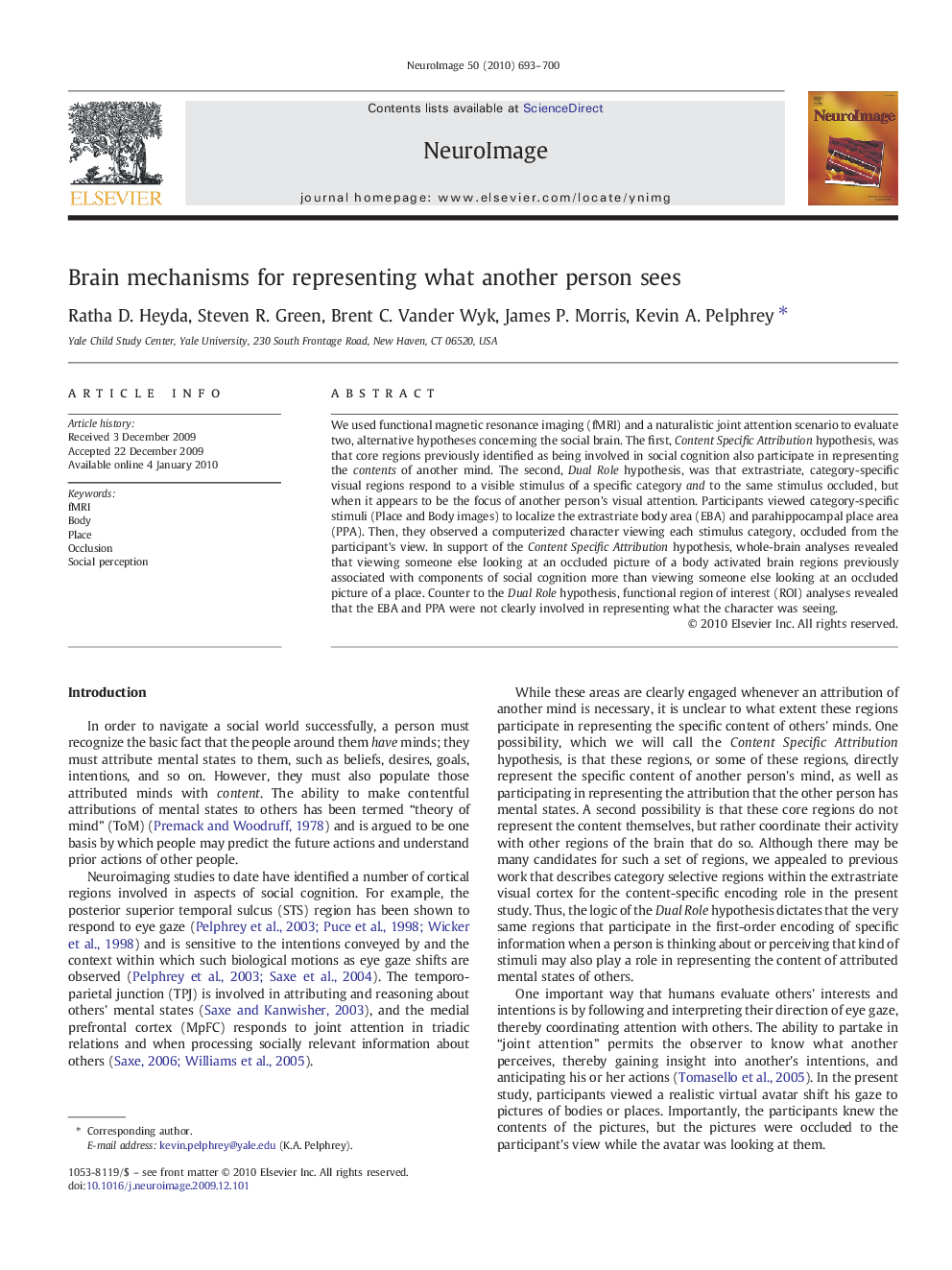| Article ID | Journal | Published Year | Pages | File Type |
|---|---|---|---|---|
| 6036617 | NeuroImage | 2010 | 8 Pages |
Abstract
We used functional magnetic resonance imaging (fMRI) and a naturalistic joint attention scenario to evaluate two, alternative hypotheses concerning the social brain. The first, Content Specific Attribution hypothesis, was that core regions previously identified as being involved in social cognition also participate in representing the contents of another mind. The second, Dual Role hypothesis, was that extrastriate, category-specific visual regions respond to a visible stimulus of a specific category and to the same stimulus occluded, but when it appears to be the focus of another person's visual attention. Participants viewed category-specific stimuli (Place and Body images) to localize the extrastriate body area (EBA) and parahippocampal place area (PPA). Then, they observed a computerized character viewing each stimulus category, occluded from the participant's view. In support of the Content Specific Attribution hypothesis, whole-brain analyses revealed that viewing someone else looking at an occluded picture of a body activated brain regions previously associated with components of social cognition more than viewing someone else looking at an occluded picture of a place. Counter to the Dual Role hypothesis, functional region of interest (ROI) analyses revealed that the EBA and PPA were not clearly involved in representing what the character was seeing.
Related Topics
Life Sciences
Neuroscience
Cognitive Neuroscience
Authors
Ratha D. Heyda, Steven R. Green, Brent C. Vander Wyk, James P. Morris, Kevin A. Pelphrey,
